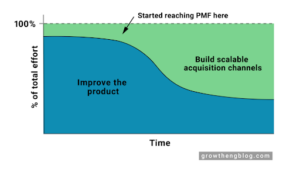What’s the Best Way to Store Data for Analytics?

Data lakes and data warehouses both centralize data and make it more accessible, but which is more useful for conducting analytics?
In most business examples, a data warehouse is more useful than a data lake because it’s more efficient at answering predefined questions. However, every data pipeline is unique and if the volumes of data are high or the process involves technical users asking novel questions, a data lake may be more helpful.
It’s important to keep in mind that data warehouses and data lakes have different purposes and they are not meant to be interchangeable. Many businesses use both of them.
To become a data-driven company, it’s vital to know when it’s necessary to leverage these two storage systems independently or together. To get started, let’s take a closer look at their features.
What Is a Data Warehouse?
A data warehouse is a well-organized storage location for structured data that is collected from a variety of sources and is ready for analysis.
What Is a Data Lake?
A data lake is a minimally-organized storage location for unstructured and structured data.
|
DATA LAKE |
DATA WAREHOUSE |
|
Can store structured and unstructured raw data |
Stores only structured data |
|
Most often used by data scientists and engineers |
Most often used by business professionals and data analysts |
|
Use of data is not pre-configured (schema-on-read) |
Use of data is pre-configured (schema-on-write) |
|
Fast updating and accessible, harder to generate insights |
Easy to search and generate insights, difficult to modify |
|
Exclusively cloud-hosted |
Can be self-hosted or cloud-hosted |
Lakes vs. Warehouses
One way to visualize the differences between data warehouses and data lakes is to compare them to real-world objects. Because of the structure, filling a data lake is a lot like filling an actual lake and filling a data warehouse is a lot like filling an actual warehouse.
A lake is best filled by pouring water in with minimal processing and maximum rate of flow because water is free-flowing and difficult to organize.
A warehouse is best filled in an orderly process of putting boxes on shelves because boxes have pre-existing structure which makes it easy to incorporate in a larger organization system.
Just like the real-world examples, the structure of what’s stored has major implications on which storage works best. Data lakes are designed to accommodate bulk data that is minimally processed and data warehouses are best filled with structured, standardized data.
Why Data Structure Matters
In data lakes, minimal structure requires additional data transformations before you are able to generate insights. It is necessary to invest in supporting infrastructure, data governance processes, and technically advanced staff to manage the data before analysis.
In data warehouses, data structure limits what you can collect, influences how quickly you collect data, and makes analysis faster and more accessible to a wider audience internally.
Who Uses Data Warehouses and Data Lakes?
Data warehouses are better suited for business professionals because they pre-format data, making it easier to search and find insights without needing an extensive technical background. They increase accessibility by including pre-integrated data analysis features like reporting.
For data lakes, the primary users are often data scientists because they have the skills required to properly process, clean, and transform the data so it can be analyzed.
Who uses what type of storage isn’t set in stone. Business professionals with a high degree of technical experience may venture into using data lakes and data scientists may appreciate the ease with which data warehouses operate.
Do I Need a Data Lake?
If your business collects a high volume of unstructured information, you will likely need a data lake. A data lake is also necessary for organizations who analyze large datasets using machine learning (ML) or artificial intelligence (AI) operations or conduct realtime reporting on centralized data.
Do I Need a Data Warehouse?
The main reason for adopting a data warehouse is to improve analytic performance by separating infrastructure, collecting from a variety of sources, and formatting data.
If intensive analytics are using up all the resources of the infrastructure that also processes operational data, it’s not just analytics that can end up suffering. The performance of other operations will also be affected until a separate data warehouse is implemented.
In cases where data volumes are small and the sources of data are limited, it may be possible to use a single database. But if your business combines data from different internal tools to answer questions, a data warehouse is necessary. A common example is if you collect application data from your customers and want to compare it with customer purchase history.
Some unstructured sources like NoSQL data stores can’t be easily searched for analysis until they are processed into a data warehouse. In cases where common queries are analyzing thousands of lines of data and taking forever to run, data warehouses can speed up results through aggregation.
Data Warehouses and Data Lakes Can Work Together
The set of all tools you use for analyzing data is called your data stack. A single data stack may include a data warehouse, a data lake, or both.
Within a data stack, a data lake can be connected with a data warehouse to serve a bulk collection point. From there, data is transformed and then sent to a data warehouse where it is analyzed. Some of the world’s most well-known businesses use a hybrid data warehouse/data lake approach.
The international company that makes Budweiser, Corona, and other popular beer brands, AB InBev, uses data lakes to bulk store data and run experimental queries while also using a data warehouse for production analytics including deliveries and quality of production.
The company behind the video game Fortnite, Epic Games, uses data lakes to collect the real-time bulk data from over 125 million users and also uses data warehouses to run batch analytics.
Hybrid Data Lakes/Data Warehouses
The distinction between data lake and data warehouse is becoming more blurry as technologies evolve. As processing power expands, data warehouses are starting to provide services that were previously only carried out by data lakes such as processing real-time bulk data.
Data lakes and warehouses are changing as infrastructure changes and there are few hard and fast rules about what they can do. Some experts like Donal Feinberg of Gartner believe that data lakes will one day replace data warehouses. It’s also possible that the rise of cloud-based data warehouses like Snowflake with high-volume data lake features may make data lakes obsolete.
At the end of the day, what’s most important is matching your needs to the capabilities of the current technology. Data sources, infrastructure, business reporting needs, compliance needs, whether you’re self-hosted or not may all come into play in the decision of what works best for you.
Become Data-Driven: Connect With Your Data
Data is only useful if it is accessible. Centralizing data in a lake or warehouse is the first step to making it accessible but the work isn’t done there.
For data lake users, the ease of scalable bulk storage comes with the risk that when data is dumped in a data lake, it’s possible it will never become accessible through further transformation. In these cases, a data lake becomes a data swamp. To overcome this danger, data governance is necessary to plan the flow of information from its sources to its final point of analysis.
In data warehouses, complex configuration requirements can form a barrier to connect new sources of data. If a system requires too much configuration, it increases set-up time/cost, the risk of errors, and the likelihood that it will not be maintained. User-friendliness can determine if you connect your data with your analytics and start making better informed decisions or your data.
Mozart Data’s out-of-the-box data stack addresses the principle drawback of data warehouses by streamlining configuration, making it easy for non-technical users to install and use. You can set up Mozart and connect all of your data sources with a couple of button clicks and then start making your data accessible to all of your teams.
Find out how to remove barriers to insights and set up a new data pipeline in hours rather than weeks by requesting a free demo.


